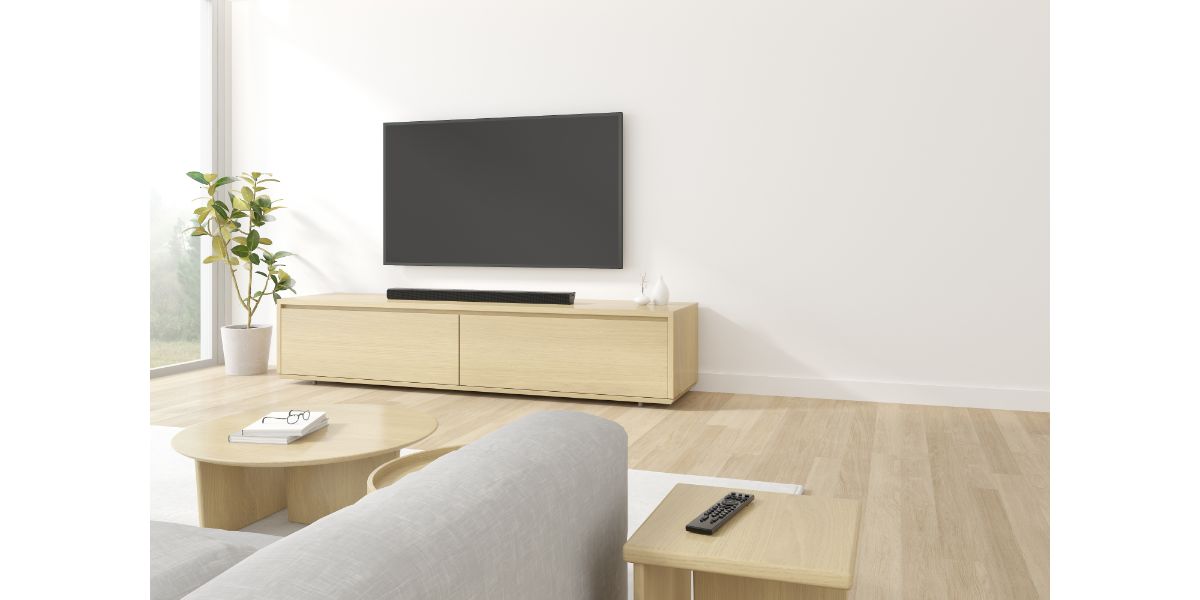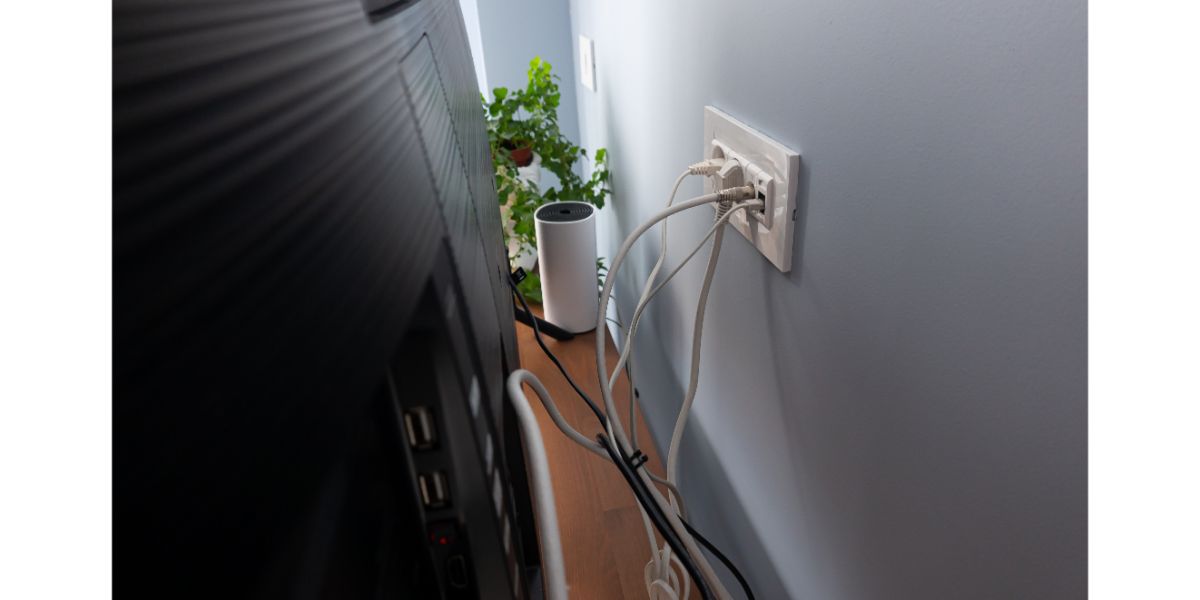Disclaimer: This post may contain affiliate links, meaning we get a small commission if you make a purchase through our links, at no cost to you. For more information, please visit our Disclaimer Page.
If you’ve bought a new Panasonic or are having some trouble with an older model, there’s no need to worry – we have 10 fixes that should get your Panasonic back up and running. Whether it’s an external or internal issue, this troubleshooting guide will help you get to the bottom of it.
Table of Contents
Why won’t my Panasonic TV turn on?
Panasonic TVs may not turn on for a variety of reasons.
First, it could be an external issue such as an outlet, power cord, cables, buttons, or remote problem.
Second, it could be that the TV is in hotel, demo, or shutdown mode, preventing the screen from progressing.
Finally, you could have a hardware issue that requires professional assistance.
Let’s go through the 10 fixes from easiest to most complicated until your Panasonic TV issue is resolved.
1. Check the power outlet or power strip
Sometimes what seems to be the most complicated problem is solved by the simplest solution. Check out your power outlet and ensure your TV is plugged in correctly. If it still doesn’t turn on, unplug it and test another device in that outlet to ensure it is generally working.
If your TV is plugged into a power strip, it should have a shining light to indicate power. Unplug the TV, plug another device into the power strip, and make sure that the power strip is delivering electricity.
If your outlet or strip doesn’t work, check for blown fuses. If the fuses are intact, you should replace the power strip and/or call an electrician to fix the outlet.
If both of these outlets work, move on to step #2.
2. Check the power cord
The power cord is the thick cable that connects your TV to an outlet. Check to ensure that it is securely plugged into your TV and outlet. Check the contact points and make sure they are clean and not corroded.
Look for signs of a damaged cord, such as fraying, a cut, or other damage. Cords may also be damaged from power surges if your area has experienced any recently.
Double-check that you’re using the correct power cord with your TV.
3. Secure all cable connections
Various cables connect your TV to its power source and other devices. Locate all of the cable connections on the back of your TV. You should see HDMI, component, composite, and audio cables.
Inspect each cable and make sure it’s clean and not corroded. Ensure each cable is securely plugged into the TV and the corresponding outlet or device. You can do this by unplugging it, plugging it back in, and lightly tugging on it to make sure it’s secured in its port.
4. Examine your remote
Your remote may be faulty and, in turn, not turning on your TV. Press your TV’s power button to see if the TV turns on. You can also try turning on your TV with another universal remote, replacing the batteries on your original remote, or resetting your original remote.
5. Try out the TV’s manual power button
Push your TV’s power button and ensure it isn’t jammed or stuck. If you push it to no avail and the TV remains off or on standby, move on to solution #6.
6. Make sure the input is correct
Sometimes a TV may look like it’s not turned on, but the black screen is actually just on a certain input with no receiving signal. Every TV has different inputs to choose from, and these are the sources that determine your display.
For example, if you want your TV to reflect your laptop screen, you’ll usually have to connect your laptop to the TV with an HDMI cable and select HDMI 1 or 2 as the input method on the TV. This will switch your TV from showing you your basic cable to your laptop by getting its information from the HDMI input.
On the other hand, if you select HDMI 1 and have nothing plugged into the HDMI cable, your TV will show a black screen.
Find your menu settings and select the correct input. You can do this with your remote or, in most cases, with a physical input button on your TV.
7. Make sure the TV is not in “hotel” or “demo” mode
Most people don’t know that many TVs have “hotel” or “demo” modes, especially commercial televisions. This prevents guests and customers from messing around with the TV’s settings, channel lineup, picture settings, etc.
Most TVs at home cannot access these modes, but if you purchased your TV second-hand or commercially, you may be the exception.
These modes can lock the TV onto a channel or promotional loop and limit menu items. The TV may not respond to remote controls or the power button. You may also see a lock symbol or menu on the screen.
If you purchased your TV secondhand or commercially and think it is in demo mode, you’ll need the TV manual to turn it off.
8. Check if your TV is in shutdown mode
Shutdown mode is also known as deep sleep mode. It’s a common feature used to save energy and reduce electricity consumption when you aren’t using your TV. When your TV is in this mode, it lowers its power usage by turning off all non-essential functions. This creates a low-power state.
In this state, the screen will be off and the TV won’t respond to your remote or power button. The power light will also either be off or dimmed. The light may also be blinking red.
Unplug your TV, wait three minutes, and plug it in again to see if you can turn it on.
9. Reset your TV
You can choose to hard reset or factory reset your TV. The former will drain the power from your TV and eliminate most malfunctioning memory, whereas the latter will delete all your settings and return your TV to how it was the day you purchased it.
Hard resets can be done with a non-functioning TV screen, but a factory reset will require screen access.
Hard resets can be done by:
- Turning off your TV and unplugging it
- Pressing the power button on your TV for 30+ seconds
- Leaving the TV unplugged for 10 more minutes
- Plugging it back in and turning it on
Factory resets can be done by:
- Turning on the TV (if you can)
- Holding the volume-down buttons and the menu button on the remote for at least five seconds
10. Service your TV
If you’ve tried the nine solutions to no avail, it may be time to speak with a professional. Some hardware issues are not visible to the naked eye and could cause your TV to remain turned off.
Call the Panasonic customer support team for guidance on fixing your TV. You may need to take your television to a tech repair shop or have a technician come to your home to service your device.
Final Thoughts
Panasonic TVs are known for their advanced technologies, high picture quality, and wide range of models. If you’re having trouble turning on your Panasonic, speed through our 10 fixes above and get back to enjoying your high-definition picture in a flash.


